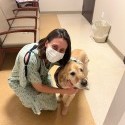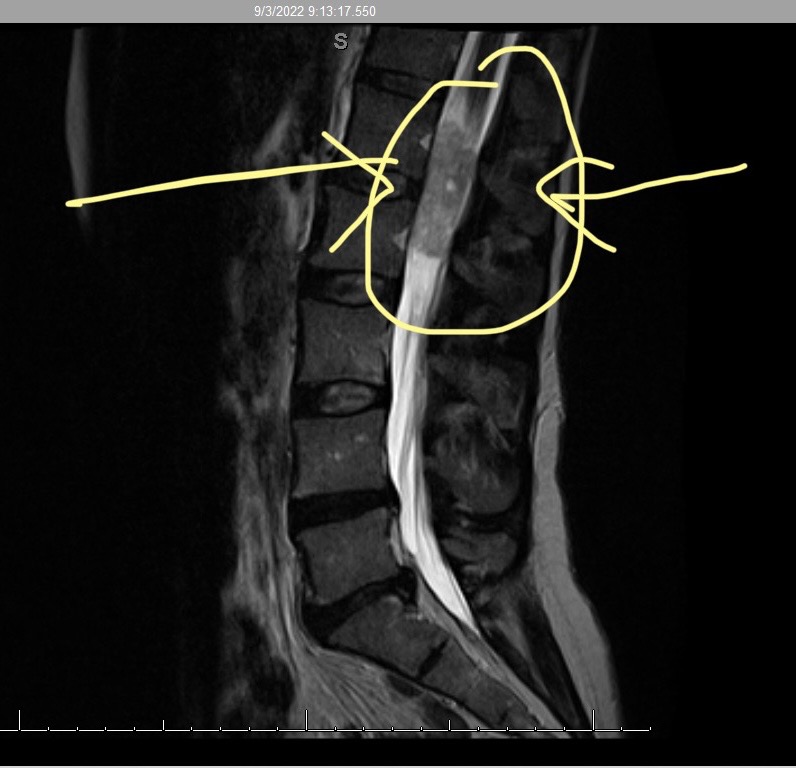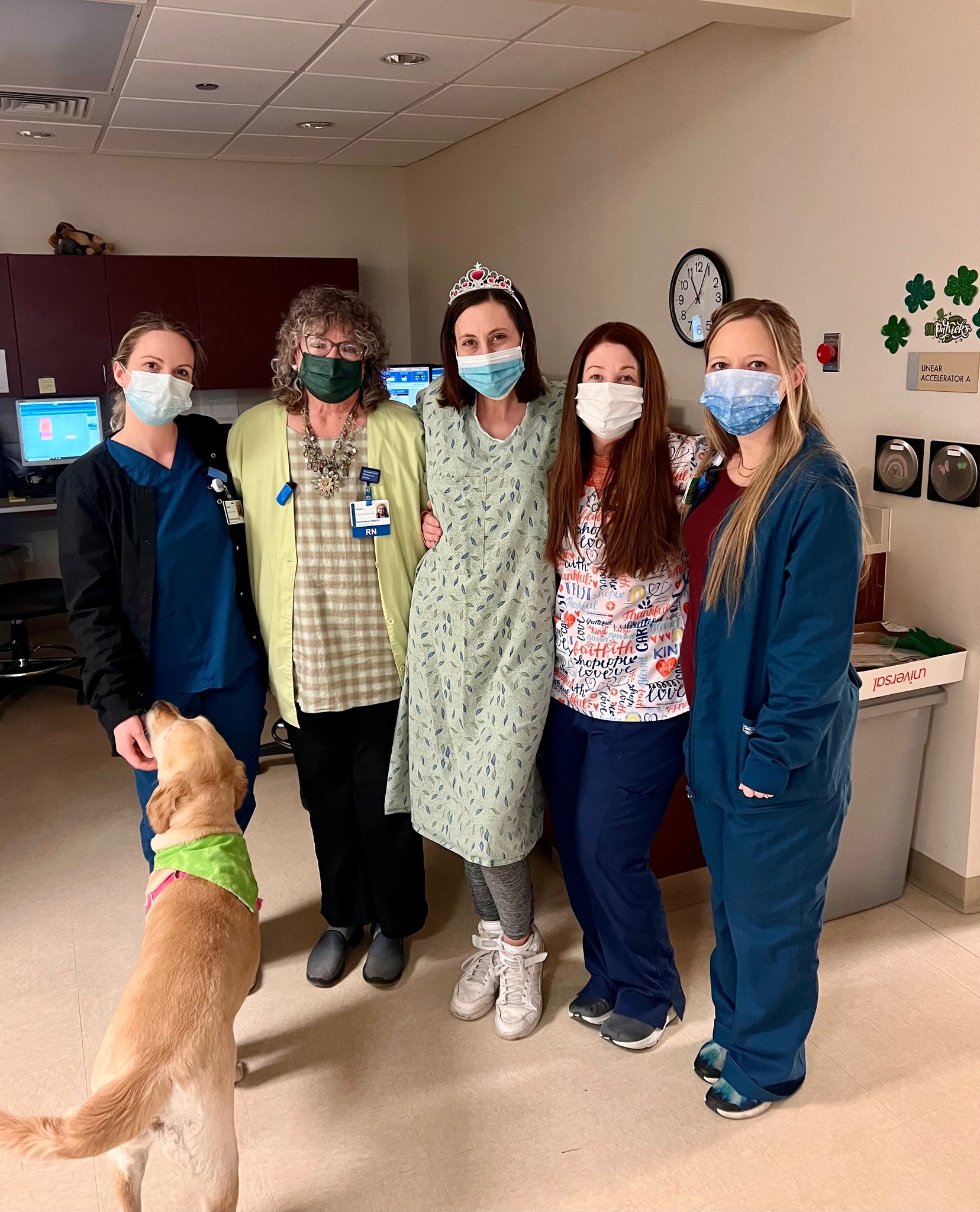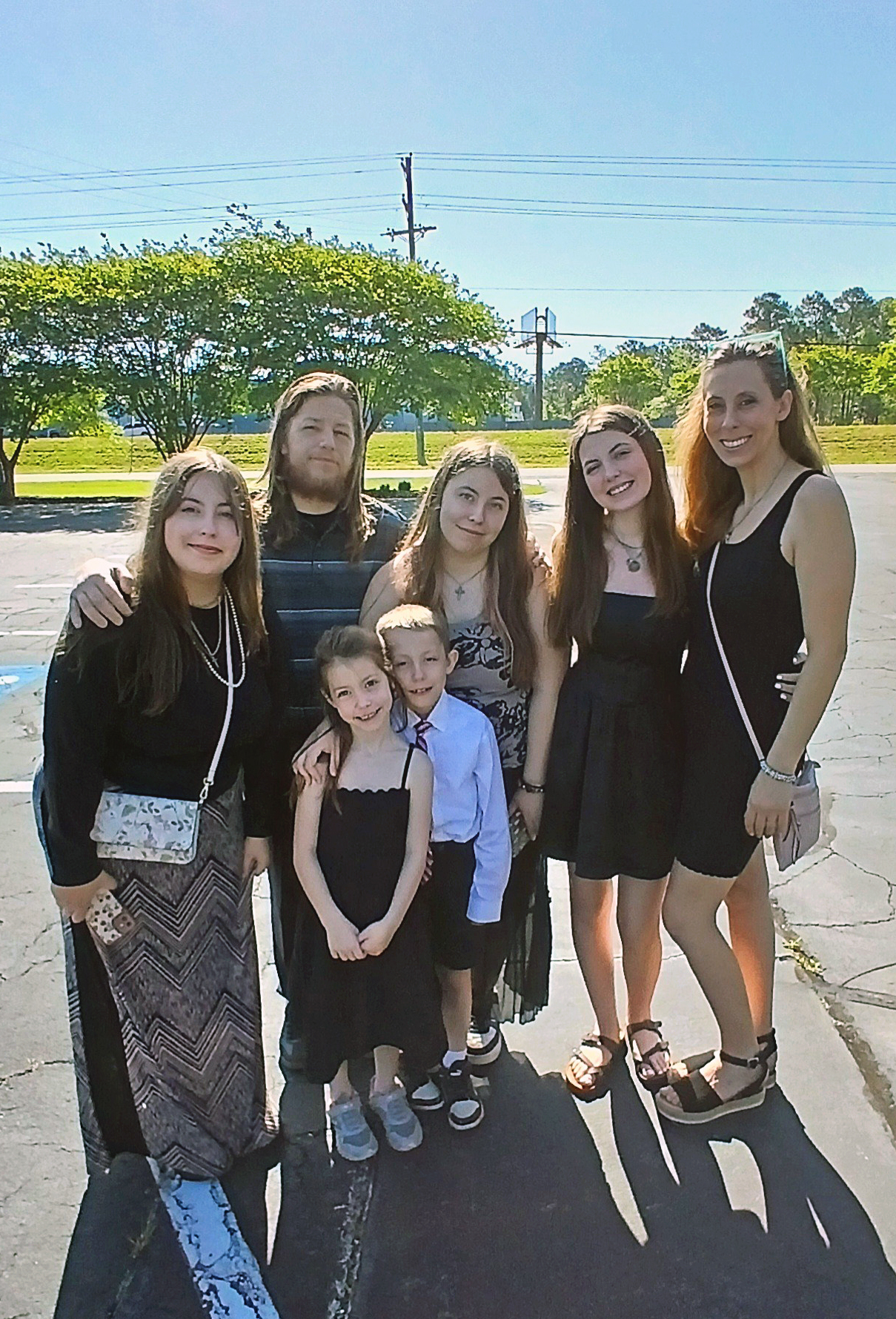My Journey with Myxopapillary Ependymoma

Name: Ashleigh J.
Type of Cancer: Myxopapillary Ependymoma Grade 2 L1-L2
Diagnosed: 2022
By: Ashleigh J.
— Categories:
“The true warrior isn't immune to fear. She fights in spite of it.” – Francesca Lia Block
Delay in Diagnosis
In 2013, I began experiencing almost daily headaches. At the time, I never would have imagined it was the start of a long, winding path toward a rare spinal cord tumor diagnosis. By 2016, lower back pain slowly crept into my daily life, growing steadily worse by 2018. I assumed it was stress or a sign of getting older or even just a side effect of carrying 5 babies, including twins. When a routine epidural went wrong in 2019 and was followed by a pulmonary embolism, my health concerns started stacking up—but I still didn't have any answers.
Then, in July 2022, something changed. I suddenly couldn’t move properly. I lay in bed, waiting for the pain to ease, hoping it was temporary. But deep down, I knew something wasn’t right. On August 25, 2022, I finally went in for help. The MRI revealed a 4.7 cm tumor entangled in my cauda equina. My world stopped.
Surgery was scheduled for December 5, 2022, but due to the nerve involvement, only a partial resection was possible. In January 2023, pathology confirmed what I had already been told—Myxopapillary Ependymoma, a rare tumor of the spinal cord. I started 28 rounds of radiation the following month and have been closely monitored with routine MRIs ever since.
Challenges, Grief, and Acceptance
Looking back, my first real symptom was a deep pressure in my lower spine that gradually radiated down my left leg. It felt like sciatica, but it was relentless. It eventually lead to tingling and numbness in my foot, which worried me. That pressure was the tumor quietly growing. Not knowing that for years, these symptoms that felt like random burdens of motherhood now match up with this tumor making its home within my spinal cord.
and numbness in my foot, which worried me. That pressure was the tumor quietly growing. Not knowing that for years, these symptoms that felt like random burdens of motherhood now match up with this tumor making its home within my spinal cord.
This diagnosis has changed every aspect of my life—from my physical abilities to my mental resilience. I live with increased pain and anxiety, but I’ve also found a renewed sense of purpose. I’ve become motivated to achieve more and pursue a career I care deeply about—patient advocacy, especially in the rare disease space. To those newly diagnosed, my advice is this: allow yourself to grieve. Feel everything—anger, sadness, fear. Then rise. Advocate for yourself. Connect with others. Learn as much as you can. There is no “right” way to cope, and healing isn’t linear. But in time, you’ll find strength in the knowledge, the community, and within yourself.
This journey so far has taught me that a rare diagnosis, while devastating, can also be a powerful awakening. I’ve grown deeply curious about genetics and rare diseases—not just because of my condition but because I want to be a voice for others. I want to understand the "why" behind what happened to me, and help shape what happens next for others. Doing whatever small part I can in making forward progress in understanding and treating Ependymoma brings me peace with this.
Support and Sharing
When I first started searching for answers, the CERN Foundation was the first resource I found. I called them when I felt lost and uncertain, and they gave me the direction I needed. Alongside the National Brain Tumor Society, CERN became my anchor. These organizations remain a vital part of my journey—not only helping me understand my diagnosis but also giving me tools to become an advocate. Even now, when I mention Myxopapillary Ependymoma, I often get confused looks—even from medical professionals. That’s the reality of having a rare disease. But it’s also why these support organizations matter so much. Thanks to an anesthesiologist aunt in Boston, I was connected to a neurosurgeon who took one look at my scans and said, “That’s a Myxopapillary Ependymoma.” That interaction led me to CERN and NBTS—my lifelines.
Alongside the National Brain Tumor Society, CERN became my anchor. These organizations remain a vital part of my journey—not only helping me understand my diagnosis but also giving me tools to become an advocate. Even now, when I mention Myxopapillary Ependymoma, I often get confused looks—even from medical professionals. That’s the reality of having a rare disease. But it’s also why these support organizations matter so much. Thanks to an anesthesiologist aunt in Boston, I was connected to a neurosurgeon who took one look at my scans and said, “That’s a Myxopapillary Ependymoma.” That interaction led me to CERN and NBTS—my lifelines.
To me, the CERN Foundation, a National Brain Tumor Society program, means guidance. They represent support, education, and empowerment. They have given me opportunities to grow as an advocate, to connect with others, and to share my story. They are a beacon for every Ependymoma warrior looking for a way forward.
And so, I fight on, despite the fear. Because this is about more than me—it's about my children, my fellow warriors, and the future of this diagnosis. Fear may live in me, but so does fire.
